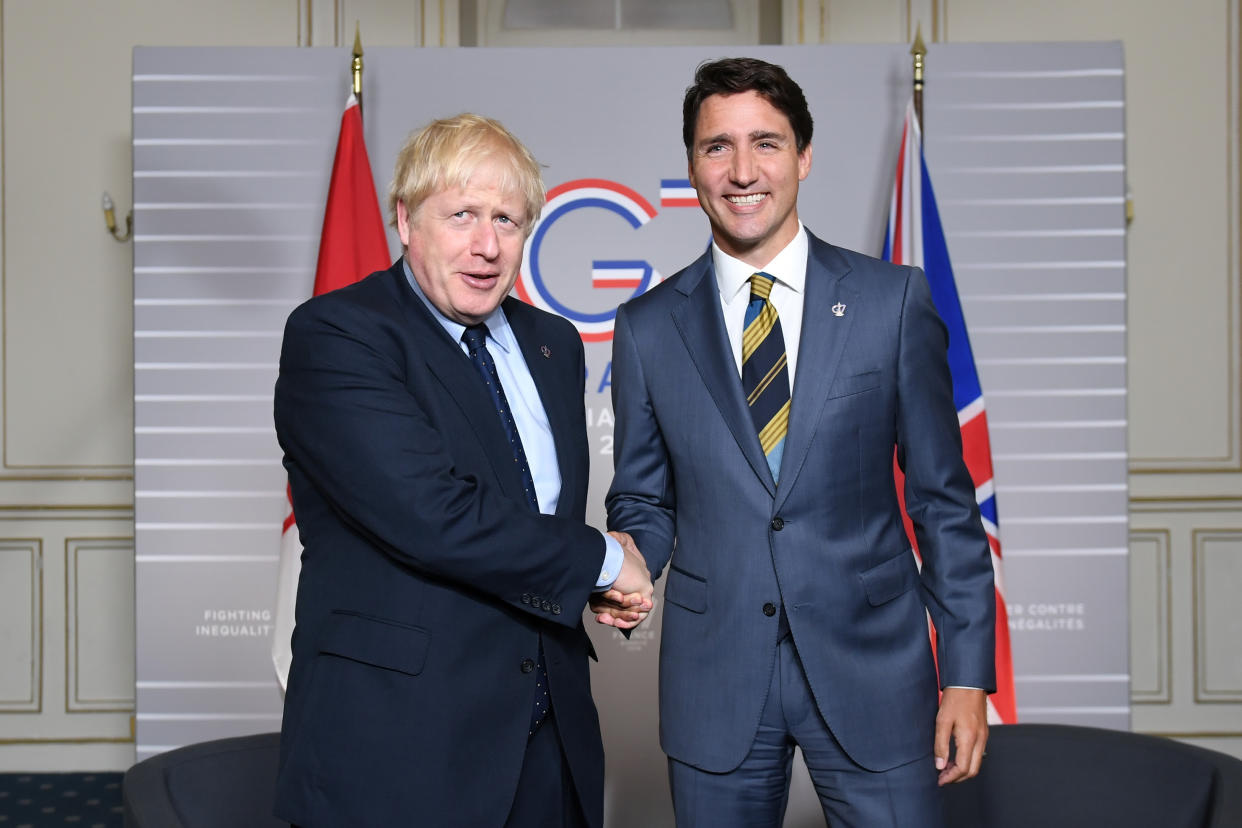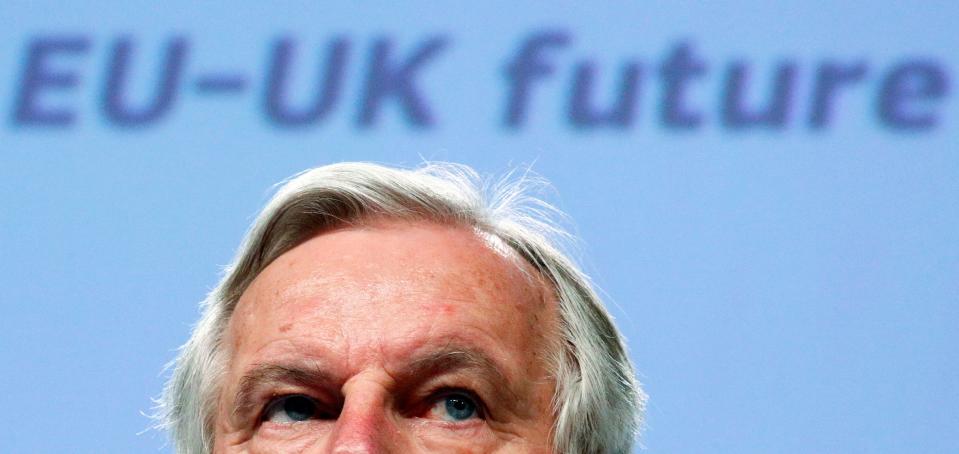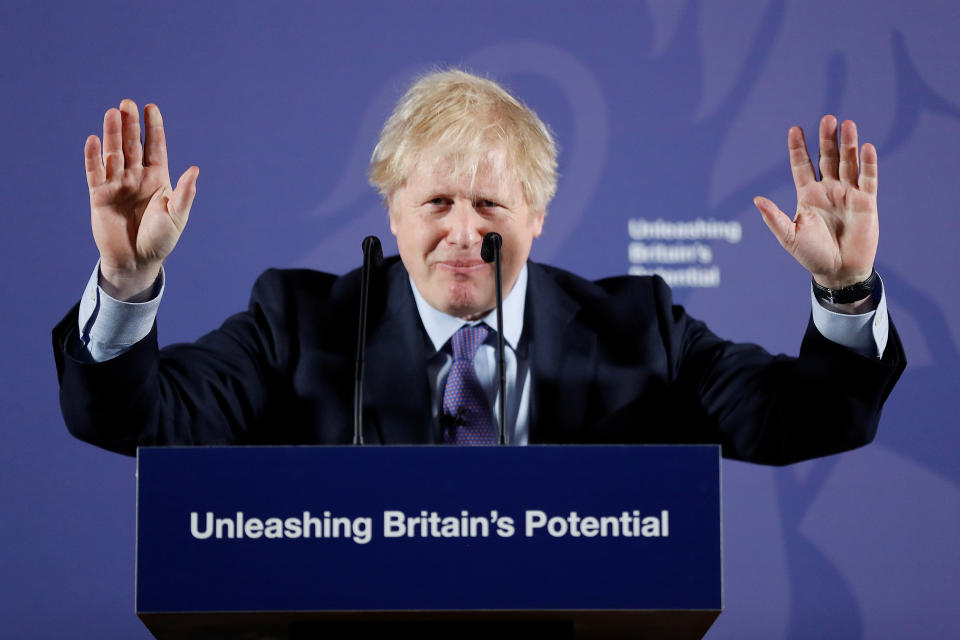Boris Johnson's Canada and Australia-style trade deals explained

Boris Johnson on Monday declared Britain will seek “a comprehensive free trade agreement similar to Canada’s” in post-Brexit trade negotiations with the EU.
The prime minister set out Britain’s trade priorities in a speech in London, saying the UK would be happy with an Australia-style deal if the EU would not agree to a Canada-inspired arrangement.
What exactly do Canada and Australia-style trade deals involve and how feasible are they?
A Canada-style deal: Zero tariffs, zero quotas but only on goods
Canada struck a trade deal with the EU, known as CETA (Comprehensive Economic and Trade Agreement), in 2017. The defining feature of the deal is it imposes no tariffs on most physical imports and sets no quotas, meaning there isn’t an upper limit on the amount of product that can be imported or exported.
Britain is looking to the CETA deal for inspiration in part because of the time constraints on negotiations. Britain has just 11 months to strike a deal with the EU and so an ‘off the shelf’ template could help speed negotiations.
“It’s probably the best I think that the UK could go for,” Peter Dixon, an economist at Commerzbank, told Yahoo Finance UK.
The big drawback of a CETA-style agreement is it only covers physical goods.
“If it was applied to the UK, it wouldn’t mean that we have financial services that was covered and that’s a big deal for the UK,” Dr George Buckley, chief European economist at Japanese bank Nomura, told Yahoo Finance UK.

Britain exported €117bn ($129bn, £99bn) of services to the EU in 2018, according to Nomura, equivalent to about 5.5% of GDP. Much of that comes from banking and other financial services sold from the City of London.
Johnson has signalled he wants CETA to be a starting point for negotiations, with ambitions to bolt on provisions for free trade of financial services. However, that could prove difficult.
“We’ve already heard from [Irish leader] Leo Varadkar on that issue. If you can’t agree a deal on fishing then don’t expect to get a deal on financial services is pretty much what he said,” Buckley said.
READ MORE: EU offers UK 'best in class' trade deal but wants fishing access
Even though a CETA-style deal is the best the UK could go for, it will ultimately be worse economically than full EU membership. CETA offers free trade but not frictionless trade.
“They will require rules of origin checks, stuff like this, which of course is very onerous,” Buckley said.
Deutsche Bank said in a note to clients that a zero tariffs, zero quotas trade deal would lead to a “significant increase in costs for cross border trade”. The bank cited increased border checks, the need to set up parallel work streams to meet EU standards, and the fact that financial services trade would likely be limited.
An Australia-style deal: Trading on WTO terms with tariffs
Johnson has said that if the EU won’t play ball on a Canada-style deal he’s happy to settle for an “Australia-style” deal with the bloc.
An Australia deal “doesn’t exist at the moment,” Dixon said. The phrase appears to be a rhetorical device used by Johnson to avoid saying no deal.
Australia negotiated a “partnership” with the the EU in 2008, which streamlines systems to make trade smoother, but the two parties still trade under World Trade Organisation (WTO) rules.
If the UK ended up with an Australia-style agreement it would involve adopting WTO trade terms. Tariffs would be applied to UK goods and services being exported to Europe, at an average rate of 5.1%.
READ MORE: Pound slides as Boris Johnson threatens hard Brexit
“It doesn’t sound like a huge number in the grand scheme of things, but when you consider the amount of cross border trade, that starts to add up,” Dixon said.
“The other problem, the bigger problem I suspect, is the controls and checks on flows of goods across borders will significantly slow down the process. Under WTO rules you have significant trade frictions with the EU that it doesn’t currently have and that most businesses will be keen to avoid.”
The cost of European goods — everything from car parts to fruit — would likely rise.

The UK could look to counter some of the negative economic effects by putting zero tariffs on EU imports. However, WTO rules require that all nations must have tariffs applied equally.
“If you accept that there are going to be zero tariffs on European goods coming in, then you’d have to have zero tariffs elsewhere,” Buckley said.
An Australia-style deal is ultimately “not really something that the UK would aspire to in trade with the EU,” Dixon said
How feasible is the Canada option?
Both Johnson and EU negotiator Michel Barnier this week said they wanted an “ambitious” free trade deal with zero quotas and zero tariffs, suggesting a Canada-style deal could be possible.
But Johnson and Barnier hugely differed when it came to what such a deal would involve. The EU wants the UK to follow EU standards on everything from environmental protection and workers rights to tax and state aid rules.
READ MORE: Boris and Barnier spar in first Brexit trade skirmish
The UK wants to be free to diverge from the EU, accepting that exports would have to follow EU specifications but arguing products bound for elsewhere or the internal market shouldn’t have to follow the same rules.
“The problem with [a Canada-style deal] is that it will require a certain degree of regulatory harmonisation,” Dixon said. “And that’s the sticking point. It requires and UK and the EU to be much closer together in terms of their negotiating stance than they currently are.”

The gulf will likely narrow as negotiations progress.
“The important thing is these are starting points,” Buckley said. “At some point you’d expect the two of them to come together and find somewhere to agree.
“It’s always a case of trying to reach a middle ground and if you know you’re going to reach a middle ground, and it needs to be in the middle, you might as well start out as wide apart as you possibly can. I think that’s why these negotiating positions sound potentially a lot worse than they will end up being.”
READ MORE: Britain has officially left the EU — here's what happens now
However, a key question is whether negotiations allow enough time for the UK and EU to converge. CETA took five years to negotiate, three years to approve and ran to more than 1,000 pages. Even if it acts as a starting point, significant changes will likely be needed.
“I know they’re talking about this as an off the shelf deal, but nothing’s ever off the shelf,” Buckley said. “You can’t simply pick up a trade agreement and take it over to somewhere else.”
Deutsche Bank said in a recent note to clients that only “a bare bones deal” between the UK and EU is likely given the time constraints.
“Should the UK government stick to its pledge about leaving the transition period by the end of 2020, it is unlikely an agreement of wide scope can be negotiated,” analysts wrote.
READ MORE: Firms demand 'seat at the table' in post-Brexit trade deals

